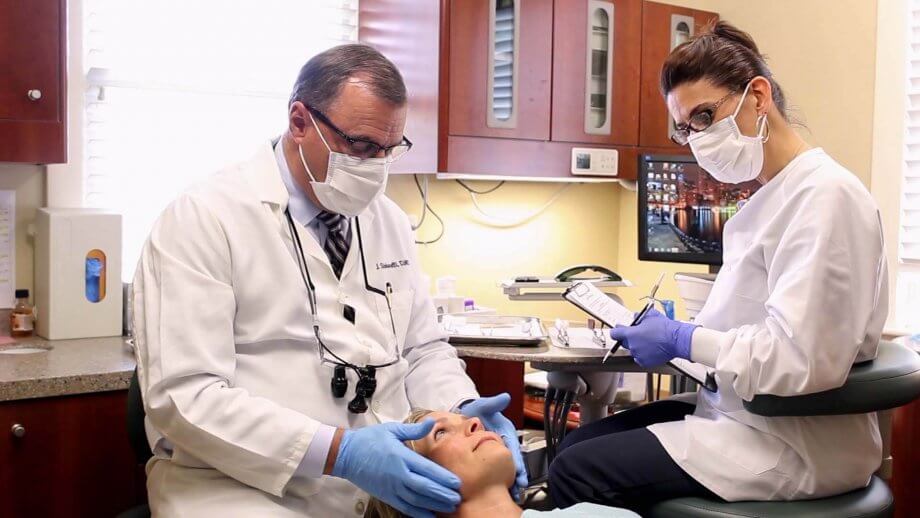By Dr. Steven Tonelli
The temporomandibular joint (TMJ) is the hinge that connects your jaw to the temporal bones of your skull, which are in front of each ear. The joint is used when moving your jaw up and down or side to side. Problems with your jaw and the muscles in your face that control it are known as temporomandibular disorders (TMD).
Physical therapy is used to aid recovery from an injury or condition, improving patient outcome by addressing pain, scar tissue, strength and range of motion. TMD (or myofascial pain) is often caused by clenching, grinding or malignment of the teeth, and can also benefit from therapy — known as appliance therapy.
What is appliance therapy, and how does it work?
We may recommend appliance therapy (night guards) when you have sore muscles, worn teeth or headache pain. The appliance is a finely refined therapeutic orthotic device. It must be carefully monitored and adjusted in order to be effective. This process will usually take multiple appointments.
The appliance must fit well without any movement, the contact with individual teeth must be even, and there should not be any contact on the back teeth when moving the jaw side-to-side.
The purpose of the appliance is to allow the facial and jaw muscles to relax, interrupting the “bad bite,” which in turn will allow the jaw joint to return to its proper position.
Step 1: Address the bite alignment
The way the teeth come together can be the stimulus for clenching or grinding, which leads to sore muscles and headache pain. Resolving the alignment of the bite allows the joint to move to its most comfortable position, enabling us to determine which teeth are the cause of the problem.
Step 2: Identify the problem teeth
When the appliance (bite plate or mouth guard) is effective, the jaw joint becomes stable and the facial and jaw muscles are relaxed. At this point we are able to identify which teeth have caused the facial and jaw muscles to overreact and led to the discomfort or facial pain.
Our first goals are to get the patient comfortable using the appliance and experiencing reduced discomfort with dissipated symptoms. Next, our objective is to get the teeth as even when not wearing the night guard as they are when on the appliance.
Step 3: Resolve the bad bite
Once we have identified which teeth are the stimulus for the overactivity, we can make a plan to resolve the “bad bite.” Depending on the patient’s anatomy and the condition of their teeth, various approaches may be used, from a simple re-shaping of the offending teeth, to orthodontics or even significant restorative work like crowns and bridges.
A mouth guard or appliance is an easy way to resolve the symptoms that you may be concerned about. Ask us about it at your next appointment.
Contact Us
